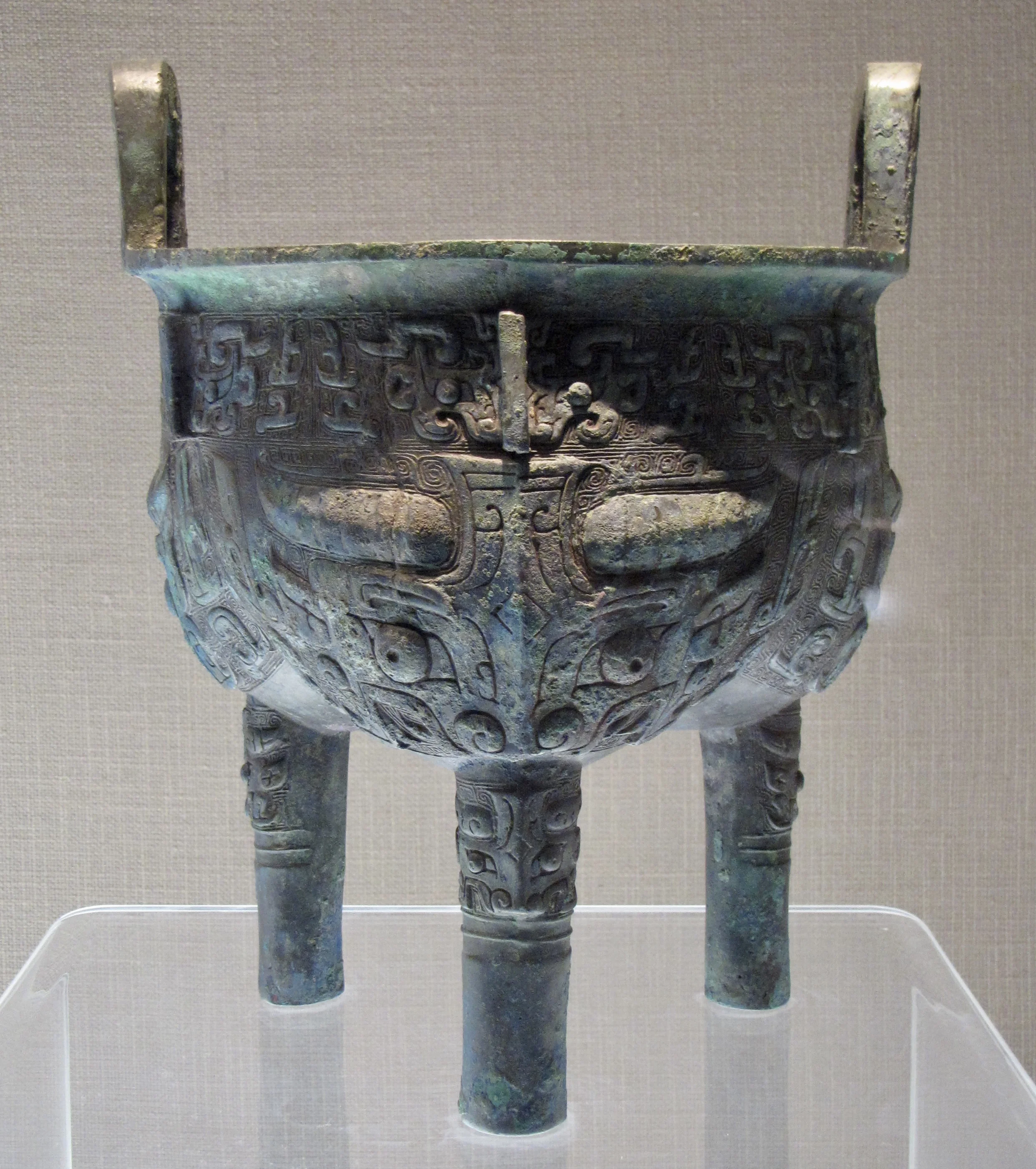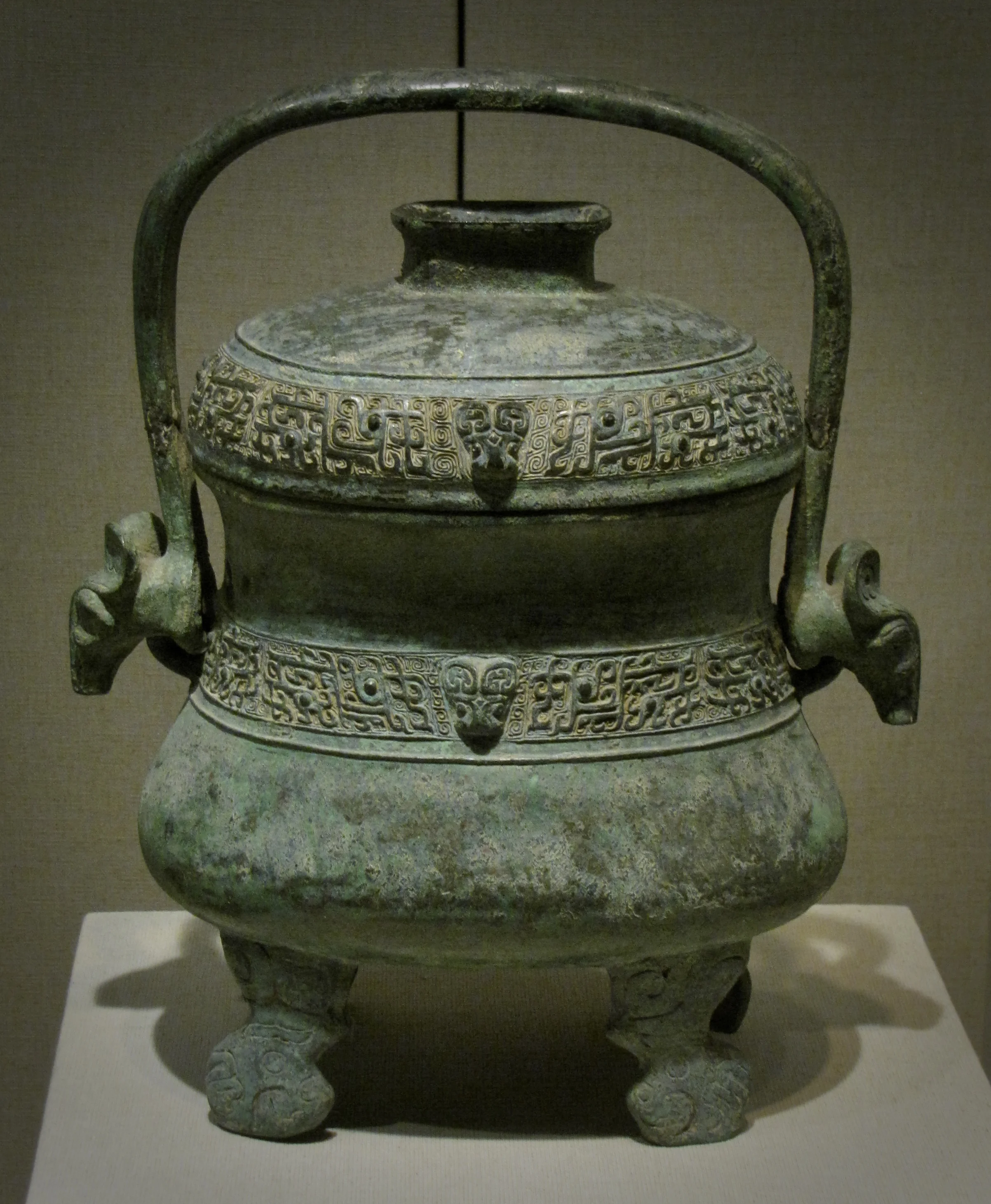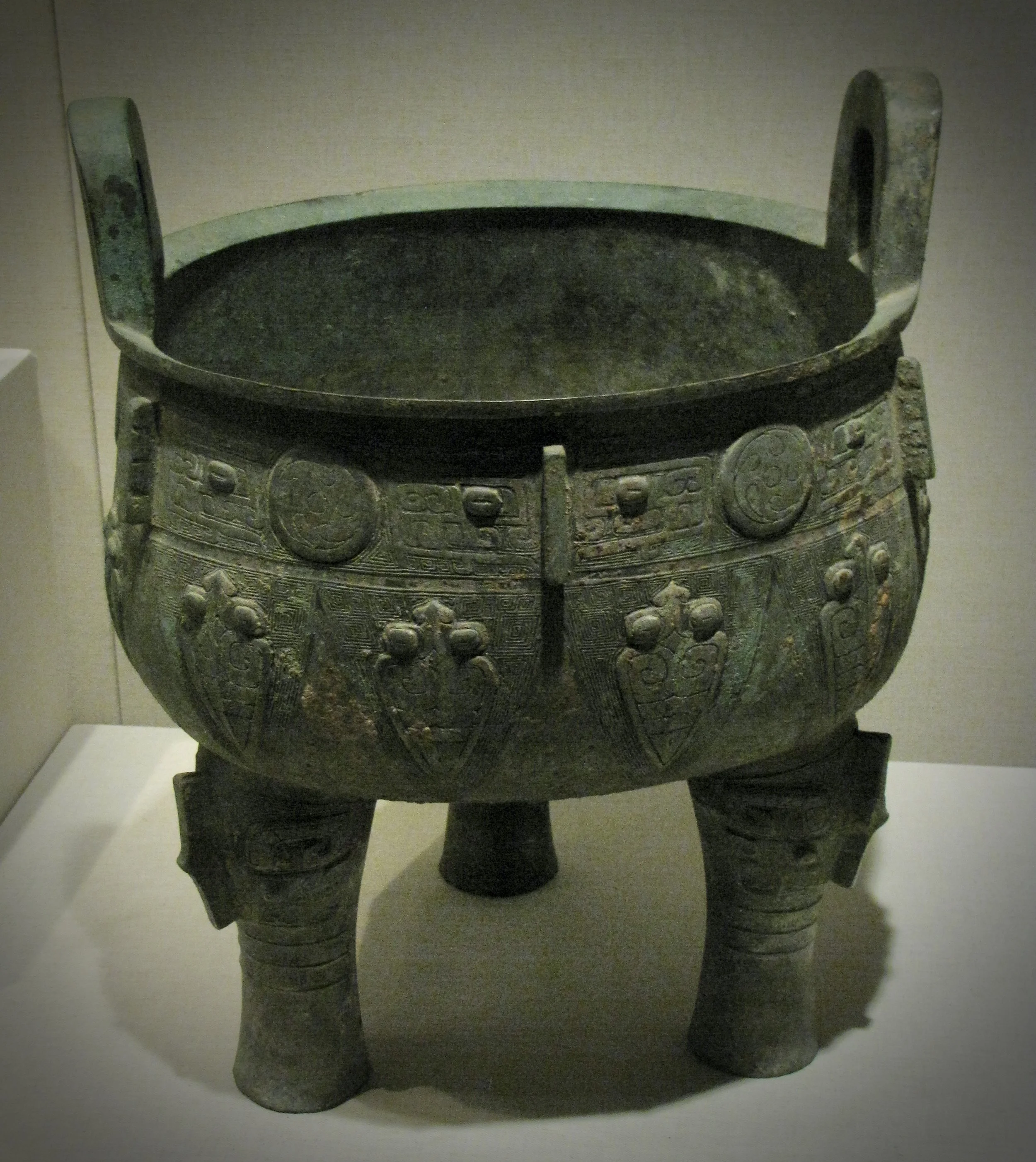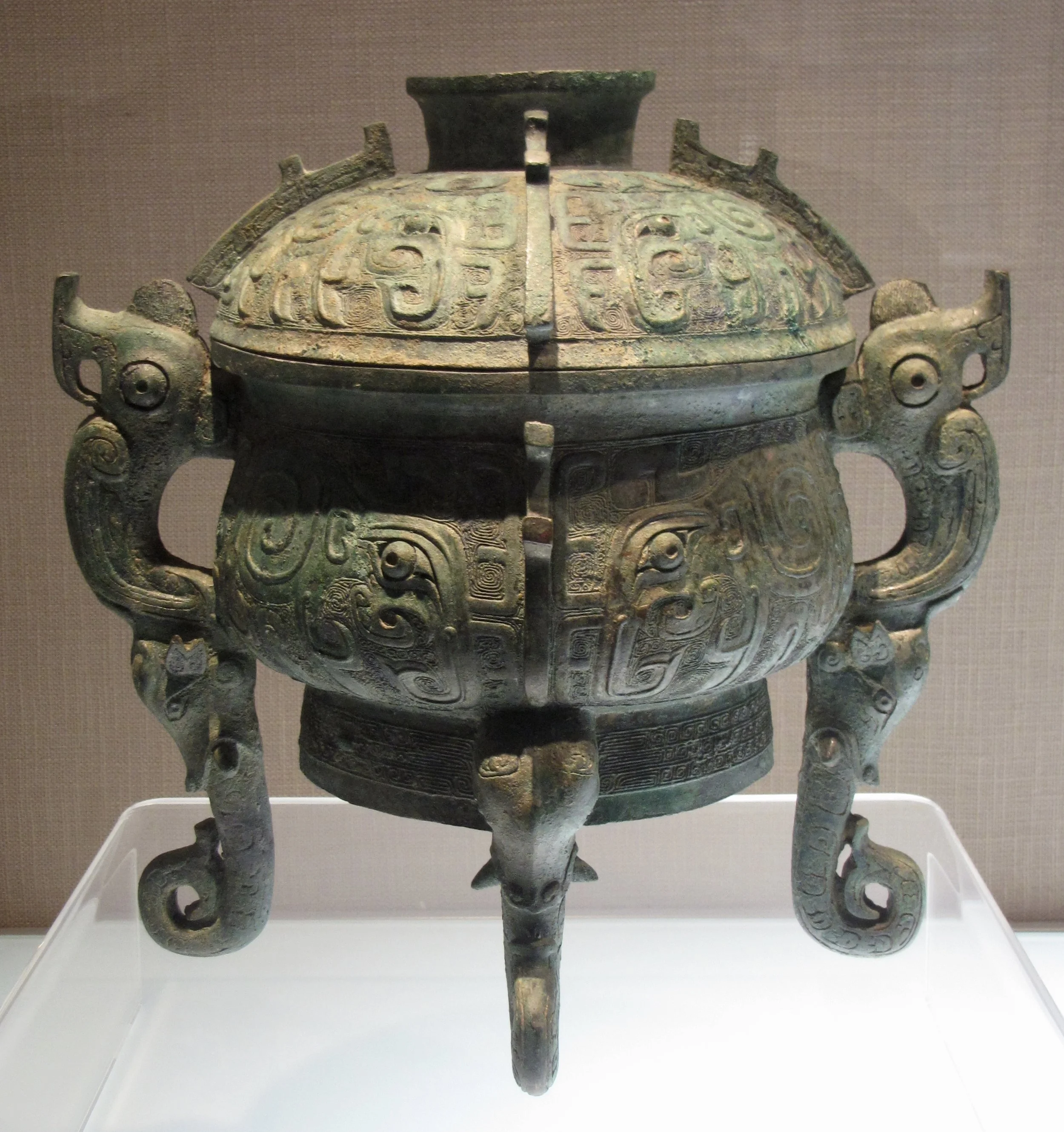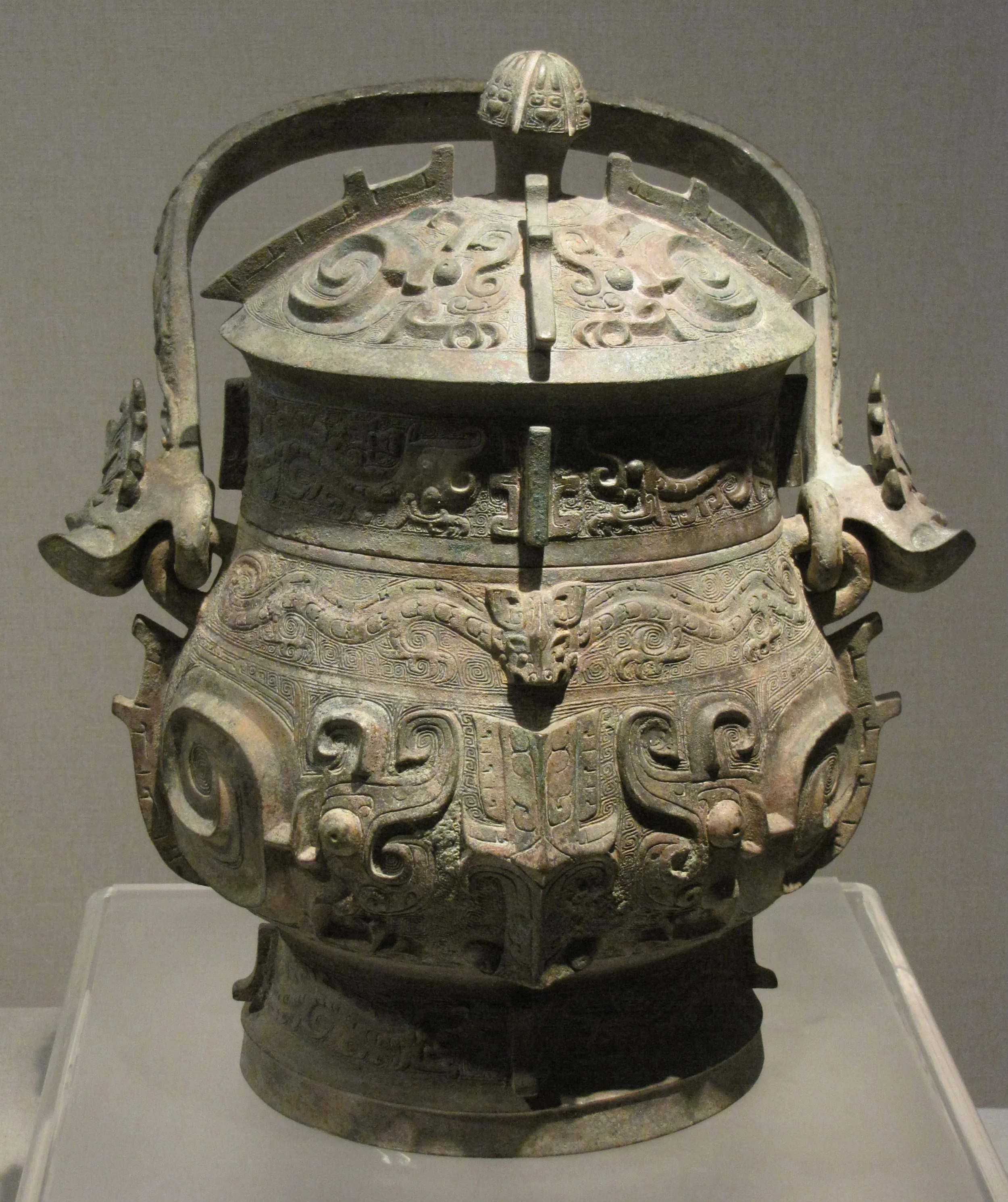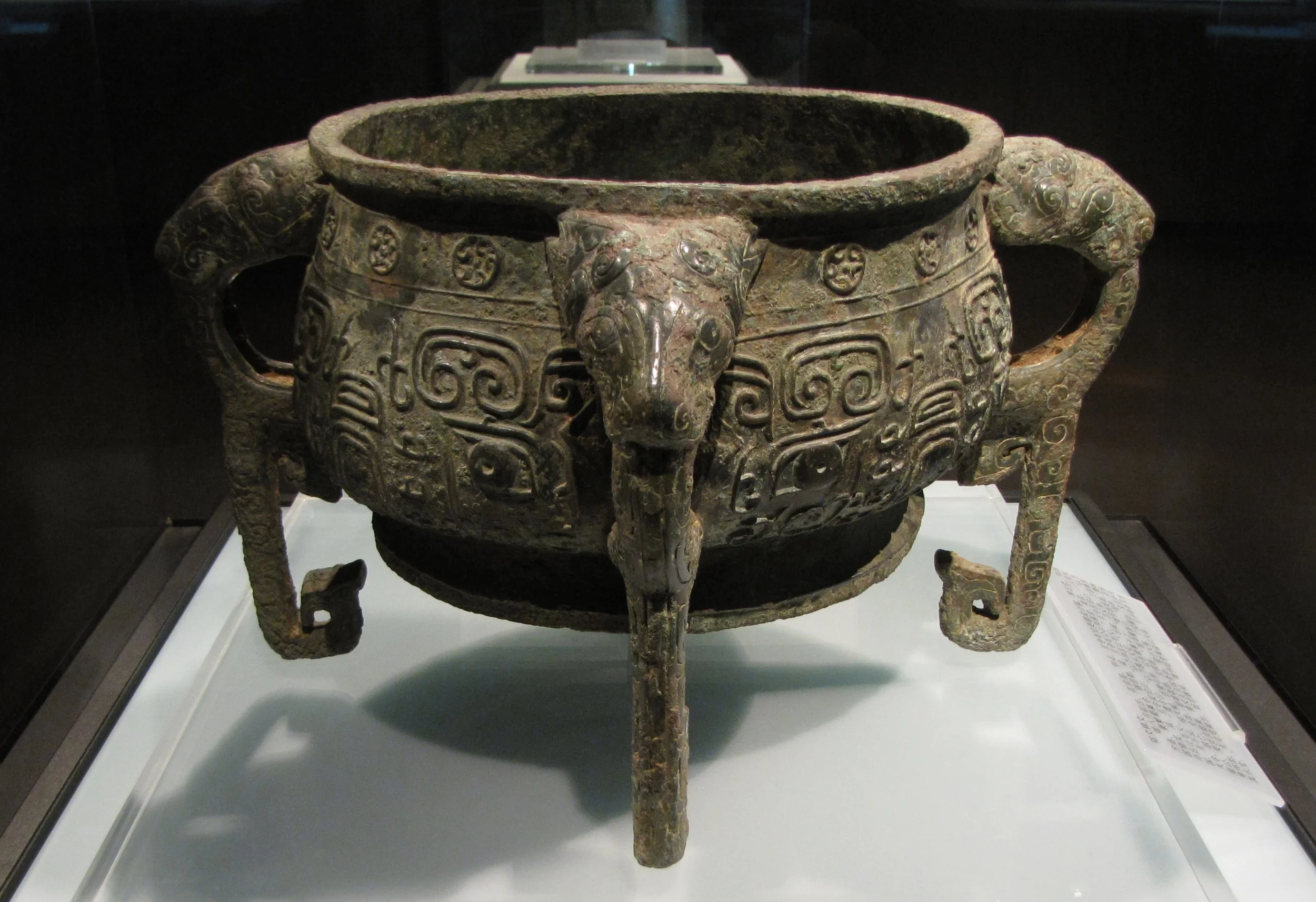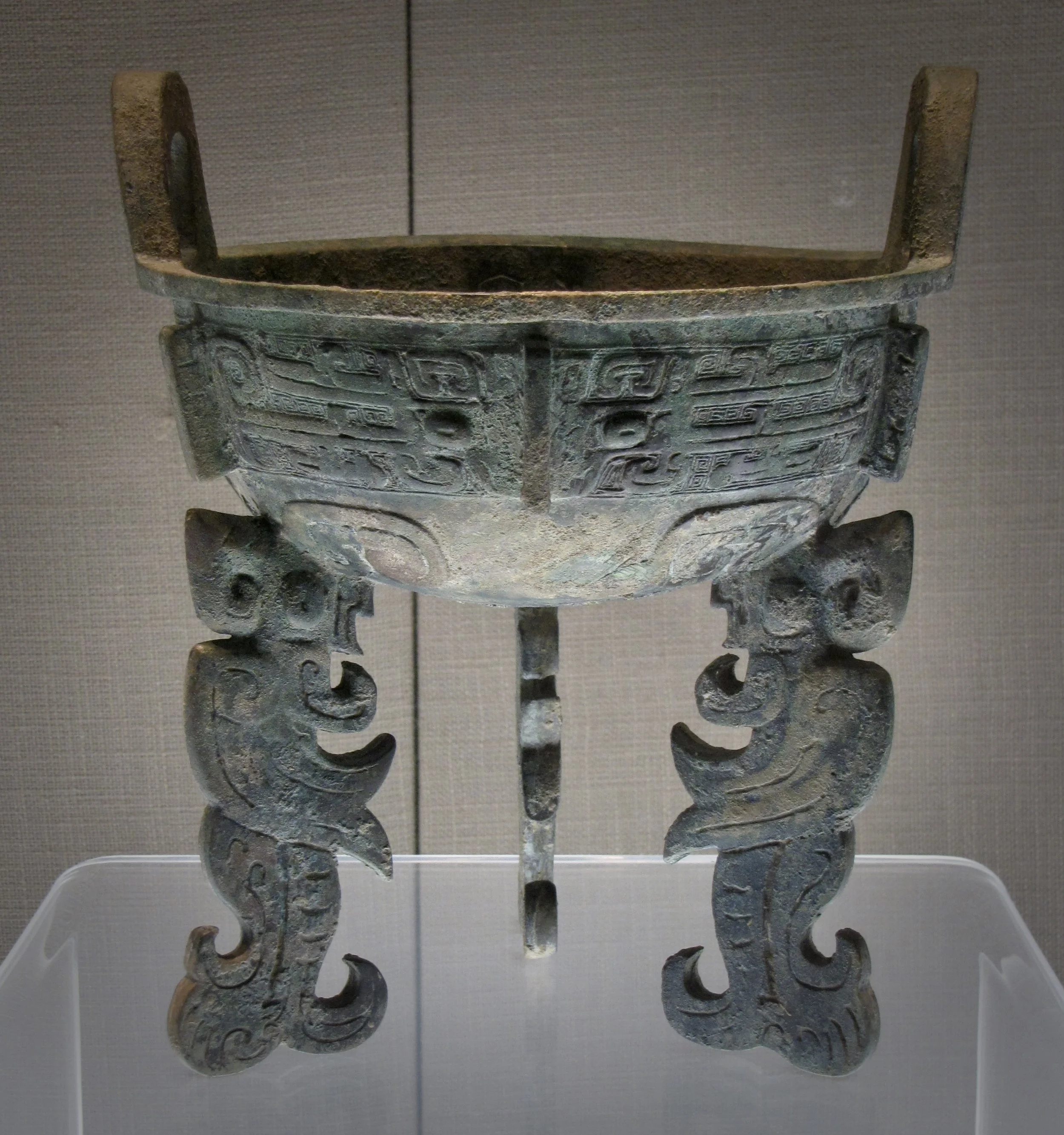China during the Shang (1766–1046 BCE) and Zhou (1045–221 BCE) dynasties had the most sophisticated bronze-making techniques of the ancient world, skills which led to increasingly complex forms as the centuries progressed. The most plentiful and best known bronzes from these periods are ceremonial receptacles for wine or food, many of which have been discovered in graves. Common shapes, like the ones pictured in this post, were based on even earlier ceramic cooking and serving containers, including:
li — vessel with rounded, hollow legs used for cooking food (see above image)
ding — a rounded vessel on three or four solid legs, also used for cooking food (see below)
yan — steamer resembling a wide-mouthed vase on top of a li base (see final image)
gui — squat, curving food vessel with a wide foot (see below).
The symbolic meanings of the animals and abstract patterns that cover the exteriors of these vessels are still mysterious, although the objects’ clear ritualistic function strongly suggests they did possess some purpose beyond purely aesthetic decoration. Two of the most ubiquitous motifs, especially in the Zhou periods, are the highly abstracted kui dragon and the tao-tie (or taotie) mask.
Although tao-tie translates as “glutton mask” or “ogre mask,” art historian Sherman E. Lee has pointed out that the name is a modern misnomer (Lee 35–36). The “mask” probably represents a number of different creatures, and may even act as a composite of multiple animals at once. The face becomes more legible (and the term “mask” more problematic) once we realize that, despite the frontal appearance of its large eyes, the tao-tie is in fact composed of two profiles joined along a vertical axis. Knowing this, we can see the curving lines that sometimes fill the space at the outer edges of the face are often actually the body of the creature. In some cases, the tao-tie and kui designs merge, appearing as two dragons facing each other, or as a single dragon split from its center (as seen in the last two dings pictured below).
Even without knowing the exact meaning or purpose of each symbol, the complex and shifting relationships between these oft repeated, yet constantly developing, images suggest their creators were inspired by a similarly complex and mystical conception of the world. And it is this transformative slippage—between front and profile views, real and mystical creatures, multiple designs on the same vessel, and the meanings of similar designs on different containers—that makes Shang and Zhou vessels so visually fascinating, intellectually engaging, and creatively inspiring.
Reference: Sherman E. Lee, A History of Far Eastern Art, 5th ed., Prentice Hall: 1994.
Date and type of each pictured vessel confirmed by museum labels.


